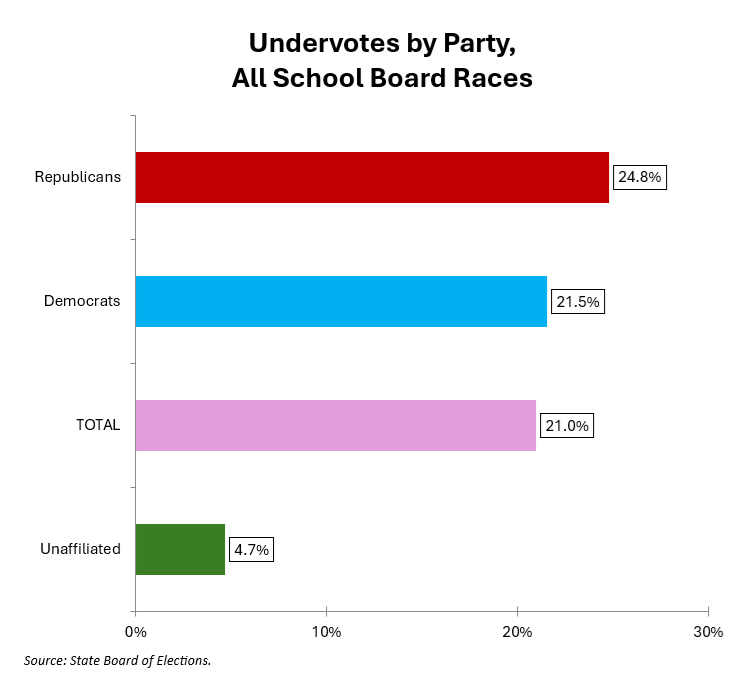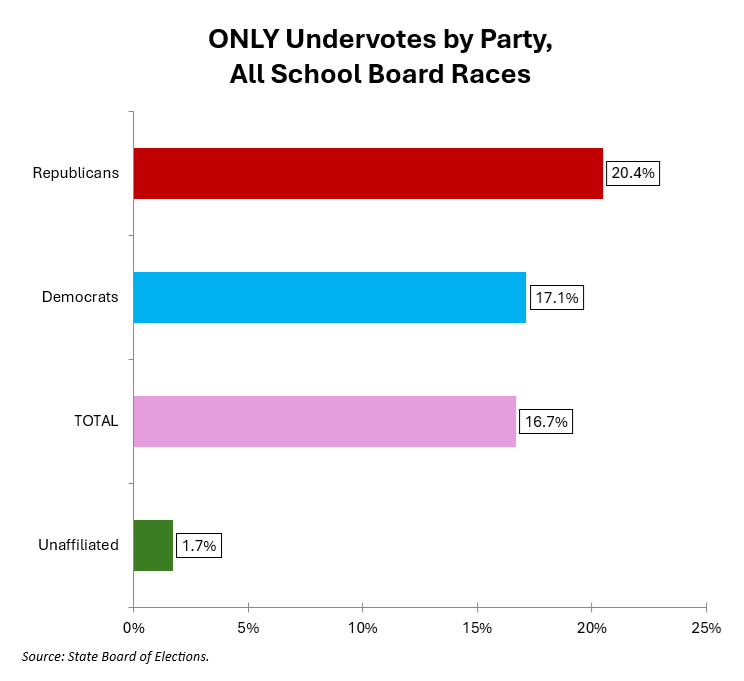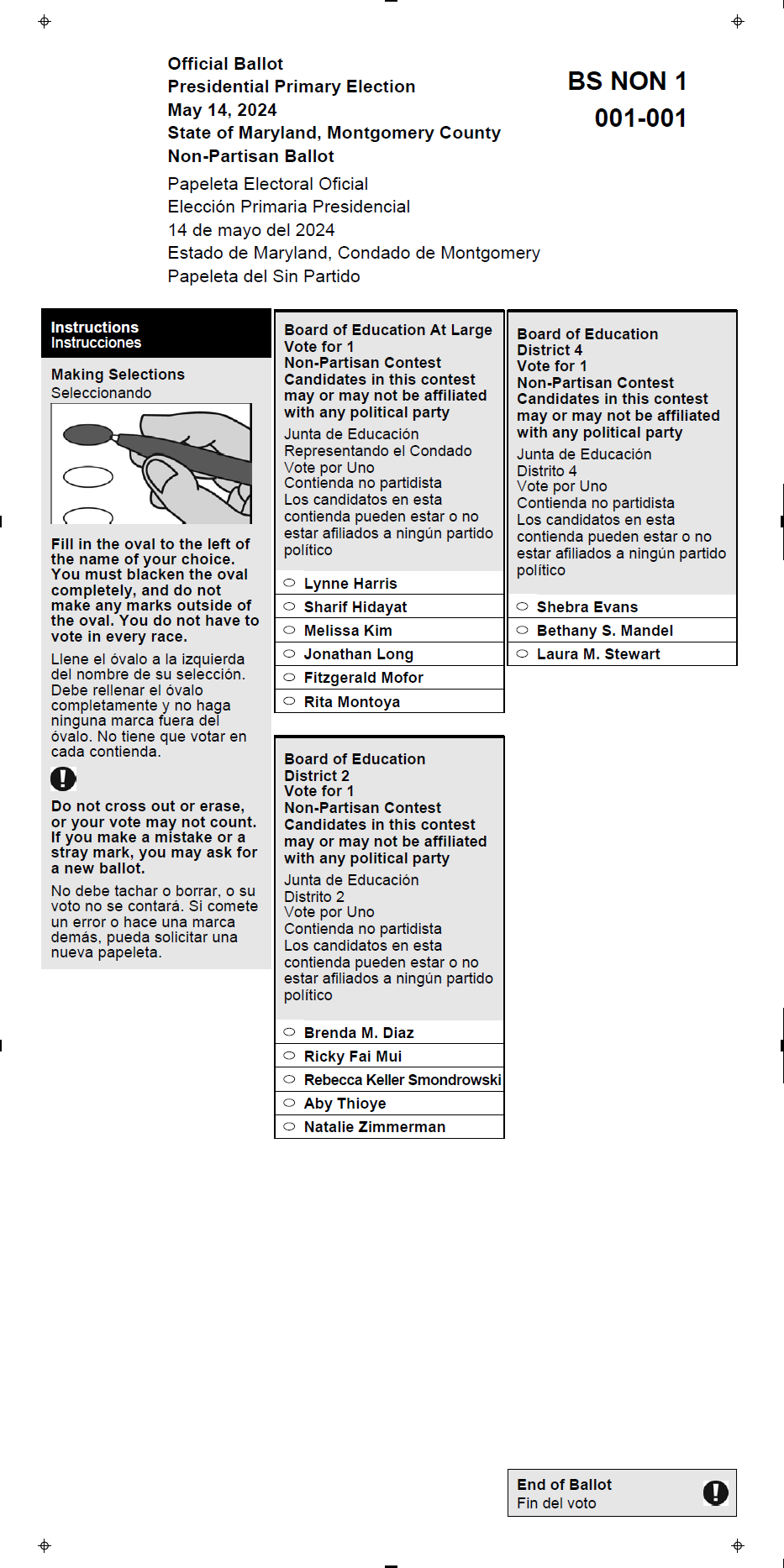By Adam Pagnucco.
Part One introduced the premise of this series: the use of cast vote records to examine partisan differences in voting in the 2024 school board primary. Part Two looked at turnout by party. Part Three examined voting for school board incumbents by party. Part Four looked at ballot placement. Part Five looked at the Apple Ballot. Now let’s examine undervoting.
Undervoting occurs when a voter casts a ballot but does not vote for every seat. In posts I published in 2020 and 2023, I found that anywhere from a fifth to 40% of MoCo voters cast ballots but did not vote for school board over the last two decades. I don’t understand this either, folks, but I imagine there are some people who want to vote for president and Congress but don’t care about their school board. For shame!
Before looking at the data, let’s note that the percentages in this series are different than those reported by the State Board of Elections because the denominator here includes overvotes and undervotes, not just votes for candidates. Overvotes occur when a voter votes for more candidates than allowed (for example, voting for two people for just one seat). One of the advantages of using cast vote records, as this series does, is that they explicitly include overvotes and undervotes. So when overvotes and undervotes are included, the percentage received by any one candidate or groups of candidates is lower than when overvotes and undervotes are excluded.
The chart below shows undervotes by party for the three school board races combined.

25% of all votes cast by Republicans for school board omitted a seat. That percentage drops to 22% among Democrats, 21% among all voters and just 5% among unaffiliated voters.
Let’s go further. The chart below shows the percentage of voters in each party who did not vote for ANY school board candidates.

One sixth of Democrats and all voters and one fifth of Republicans did not vote for any school board candidates. However, less than 2% of unaffiliated voters chose not to vote for a school board candidate. What accounts for the difference?
Let’s reprint the ballot proof for an unaffiliated MoCo voter in Precinct 1-1 shown in Part Two of this series.

Because of Maryland’s practice of closed partisan primaries, unaffiliated voters were only allowed to vote for school board. So it would be unusual for these folks to show up to vote and then not vote in these races. Still, there were 178 voters who showed up, cast a ballot and did not vote for ANYONE on the ballot. Strange but true, people!
Until now, we have been lumping candidates together in this series. In Part Seven, we will name names!
